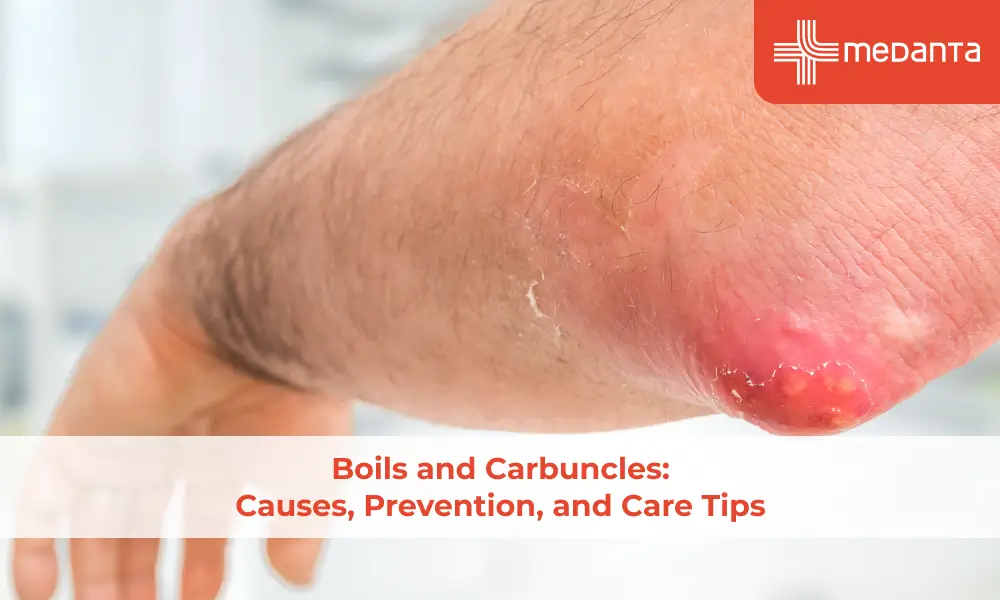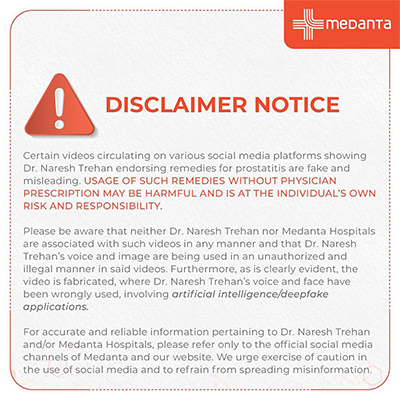Thyroid Surgery Side Effects: What to Expect After the Procedure

TABLE OF CONTENTS
Doctors generally advise thyroid surgery for conditions like large goitres, thyroid nodules causing breathing/swallowing issues, overactive thyroid (hyperthyroidism), or suspected/confirmed thyroid cancer. While this procedure has become remarkably safer over the decades, thyroid surgery side effects impact thousands of patients each year.
Most people can return home the day after surgery, though complete recovery typically takes about two weeks. During this time, patients might experience several temporary effects, including a sore throat, neck pain, and difficulty swallowing. More than half of those who undergo a total thyroidectomy experience temporary low calcium levels, and about 1.6% face changes in their voice. This guide examines these common side effects and complications, helping patients prepare for their post-surgery journey and understand when to seek medical attention.
Types of Thyroid Surgery
Thyroid surgery, also known as thyroidectomy, is a procedure performed to treat various thyroid conditions. Here are the main types of thyroid surgery:
Total Thyroidectomy:
Complete removal of the thyroid gland
Used for thyroid cancer, large goitres, or severe hyperthyroidism
Partial (Subtotal) Thyroidectomy:
Removal of a portion of the thyroid gland
Typically used for smaller, benign nodules or mild hyperthyroidism
Hemithyroidectomy (Lobectomy):
Removal of one lobe of the thyroid gland
Often performed for suspicious nodules or when cancer is limited to one side.
Isthmusectomy:
Removal of the central part (isthmus) of the thyroid gland
Less common, used for small nodules located in the isthmus
Thyroid Nodule Removal:
Surgical excision of a specific nodule without removing the entire gland
Performed for isolated, suspicious nodules
Lymph Node Dissection:
Removal of nearby lymph nodes along with thyroid tissue
Often combined with other thyroid surgeries in cases of thyroid cancer
Thyroid Surgery Complications
Patients undergoing thyroid surgery should understand the potential complications that might arise post-procedure. Each complication requires specific attention and care for optimal recovery.
Voice Changes: Voice alterations affect 30% to 80% of patients after thyroid surgery. These changes manifest as vocal fatigue, difficulty speaking loudly, or inability to sing in high pitches. Even without nerve damage, patients might experience voice fatigue, changes in pitch, or alterations in talking loudly. Most voice changes improve within three to six months, yet subtle alterations may persist in 90% of patients.
Swallowing Difficulty: Swallowing issues occur in 50-80% of patients within the early postoperative weeks. Patients often report discomfort, tightness, or a sensation of a foreign body in the throat. These symptoms typically resolve within three months. However, 20% of patients experience longer-lasting dysphagia. The extent of thyroid surgery directly correlates with the severity of swallowing difficulties.
Neck Pain and Stiffness: More than 80% of cases of post-thyroidectomy neck pain involve the posterior neck region and shoulders. The discomfort peaks within the first 24 hours after surgery. Some patients might experience restricted neck movement lasting up to six months after surgery.
Swelling and Bruising: Swelling around the incision site typically appears within the first few weeks after surgery—normal postoperative swelling measures about 1-2 finger breadths in size. If swelling increases rapidly over several hours, immediate medical attention becomes necessary.
Numbness: Temporary numbness around the surgical site commonly occurs due to disruption of local nerve pathways. Moreover, if calcium levels drop, patients might experience numbness in their fingers, toes, and around the lips.
Scarring: Surgical scars on the anterior neck remain visible and exposed. These scars might cause significant cosmetic concerns, potentially leading to functional impairment and psychosocial challenges. The natural healing process involves scar tissue becoming firmer initially and then gradually softening over several months.
Long-term Complications

Long-term complications after thyroid surgery require careful monitoring and management for optimal recovery. Understanding these potential issues helps patients prepare for post-surgical care.
Thyroid Hormone Deficiency:
After thyroid removal, patients need lifelong hormone replacement therapy. The effectiveness of levothyroxine (L-T4) depends on factors such as age, sex, and body weight. Certain medications, particularly cholestyramine, aluminium hydroxide, calcium carbonate, and ferrous sulphate, can affect L-T4 absorption. The medication works best when taken on an empty stomach, as food intake reduces absorption.
Bleeding:
Most post-thyroidectomy bleeding episodes happen within the first 6 hours after surgery, with approximately 20% occurring between 6 and 24 hours postoperatively. Immediate medical attention becomes essential as bleeding can lead to airway compression and respiratory distress. Risk factors include the use of anticoagulation medications and certain surgical techniques.
Infection:
Surgical site infections (SSIs) after thyroidectomy remain rare, affecting 0.36% of patients. Factors increasing infection risk include obesity, diabetes, and higher American Society of Anesthesiology class. Patients who undergo central lymph node dissection face slightly higher infection rates. Additionally, those with chronic steroid use show almost three times higher risk of developing SSIs.
Hypocalcemia:
Temporary hypocalcemia affects 63.7% of patients after thyroid surgery, whilst permanent hypocalcemia occurs in 1.6% of cases. Total thyroidectomy presents the highest risk of developing this complication. Symptoms might include:
Tingling around mouth and fingertips
Muscle cramps
Facial muscle twitching
Carpopedal spasm in severe cases
Damage to the Recurrent Laryngeal Nerve:
Recurrent laryngeal nerve injury rates range from 1.5-14%. The risk increases significantly in cases of:
Thyroid cancer surgery
Re-operative procedures
Total thyroidectomy compared to subtotal procedures
Permanent nerve damage occurs in 0.3-3% of cases, whilst temporary issues affect 5-8% of patients. The consequences vary from mild hoarseness to potential airway obstruction in bilateral nerve damage.
What to Do After Surgery
Proper postoperative care is vital in ensuring smooth recovery after thyroid surgery. Understanding and following specific guidelines helps minimise complications and speeds up the healing process.
Follow Your Doctor's Instructions Carefully:
Taking prescribed medications exactly as directed forms the foundation of recovery. Patients requiring thyroid hormone replacement must take their medicine consistently. For pain management, doctors often recommend Tylenol instead of ibuprofen or aspirin, as these medications might cause bleeding. Follow-up appointments typically occur within one to two weeks after surgery.
Soft Food Diet:
Most patients return to eating and drinking the night of their surgery. Start with cold drinks, flavoured ice pops, and ice cream before progressing to soft foods like:
Pudding, yoghurt, and mashed potatoes
Scrambled eggs and canned fruits
Smoothies and nutritious drinks
Finely chopped meat or meatballs
Avoid hard or scratchy foods, especially chips and raw vegetables. Furthermore, avoid acidic beverages like orange or tomato juice that might irritate the throat.
Head Elevation:
Proper head positioning proves crucial for preventing complications. Research suggests elevating the head of the bed at 30–45 degrees after thyroidectomy helps prevent airway obstruction caused by laryngeal oedema. Place two or three pillows under your head whilst sleeping for the first week.
Ice Packs:
Apply ice packs to the surgical site for 15 minutes at a time to reduce swelling and discomfort. Always place a cloth between the ice pack and the skin to prevent cold injury. Some patients might benefit from warm compresses on shoulders and back to alleviate stiffness.
Gentle Neck Exercises:
Gentle neck exercises help prevent stiffness and promote healing. Studies show that stretching exercises, performed three times daily starting the morning after surgery, notably reduced postoperative symptoms and decreased the need for pain medication.
Avoid strenuous activities & heavy lifting for three weeks after thyroid surgery. Gradually resume normal activities, listening to your body's signals. Most importantly, refrain from driving until you are comfortable turning your head from side to side.
When to Contact Your Doctor
Quick recognition of post-thyroid surgery complications enables timely medical intervention. Knowing when to contact your doctor proves crucial for preventing serious issues.
High Fever: A body temperature above 101.5°F warrants immediate medical attention. A persistent fever might indicate an underlying infection or other complications that need swift treatment.
Severe Pain or Swelling: Sudden neck swelling requires urgent medical evaluation. Neck pressure, tightness, and difficulty swallowing precede visible swelling.
Significant Bleeding from the Incision: Post-thyroidectomy bleeding occurs in nearly all cases within the first 6 hours after surgery. Watch for blood-soaked dressings or rapid filling of wound drainage. Bleeding can cause airway obstruction, necessitating immediate intervention.
Difficulty Breathing: Breathing problems demand emergency care.
Signs of Infection: Look out for:
Increased pain around the incision
Redness or warmth near the surgical site
Wound oozing or discharge
Fever with other symptoms
Voice Alterations: Severe voice changes or swallowing difficulties lasting beyond two weeks need medical intervention.
Conclusion
Thyroid surgery remains a common procedure with predictable side effects and manageable complications. Although most patients experience temporary issues like voice changes, swallowing difficulties, or neck pain, these symptoms typically resolve within three to six months.
Recovery success depends largely on following proper postoperative care guidelines. Patients should maintain medication schedules, practise gentle neck exercises, and follow dietary restrictions. While most complications are temporary, watching for warning signs proves essential for preventing serious issues.
Medical attention becomes necessary for symptoms like severe neck swelling, breathing difficulties, or persistent voice changes. Therefore, patients should stay alert to these warning signs during their recovery period. Most people return to their normal activities within two to three weeks, though complete healing might take several months.
Understanding these potential complications and recovery requirements helps patients prepare for their post-surgery journey. A successful recovery combines proper medical care, patience, and careful attention to postoperative instructions.
FAQs
What are the risks of thyroid surgery?
Thyroid surgery carries risks like bleeding, infection, voice changes due to nerve injury, low calcium levels from parathyroid damage, scarring, and, in rare cases, breathing difficulties or the need for lifelong thyroid hormone replacement therapy.
How long will I stay in hospital?
Most patients return home on the same day after a 4-hour observation period in recovery. Approximately 95% of patients go home after six hours of monitoring. Certain medical conditions might require overnight stays for additional observation.
What type of anaesthesia will be used?
General anaesthesia remains the standard choice for thyroid surgery. This ensures complete unconsciousness throughout the procedure, with a breathing tube protecting the airway.
Will calcium supplements be necessary?
About 5% of patients experience temporary low calcium levels post-surgery, whilst less than 1% face permanent issues. Doctors typically recommend:
1000 mg calcium four times daily for the first week
500 mg twice daily for the following two weeks
Additional supplements based on individual needs
When can I resume normal activities?
Most individuals return to work and regular activities within a week post-surgery. Nevertheless, patients should:
Wait 10-14 days before engaging in strenuous activities
Avoid submerging the incision for five days
Resume driving once comfortable turning their head
Will I have a scar?
Whilst all surgery causes scarring, modern techniques minimise visibility. Surgeons place incisions in natural skin lines, acting as camouflage. The redness typically fades within six months, making the scar essentially invisible. Proper wound care and sunscreen application help optimise healing.
What pain management options exist?
Most patients manage discomfort with:
Numbing medication lasting 4-6 hours post-surgery
Over-the-counter pain relievers like Tylenol
Soft foods to ease swallowing discomfort






